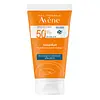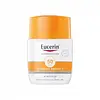What's inside
What's inside
 Key Ingredients
Key Ingredients

 Benefits
Benefits

 Concerns
Concerns

 Ingredients Side-by-side
Ingredients Side-by-side

Water
Skin ConditioningC12-15 Alkyl Benzoate
AntimicrobialDiethylamino Hydroxybenzoyl Hexyl Benzoate
UV FilterEthylhexyl Triazone
UV AbsorberOryza Sativa Starch
AbsorbentPhenylene Bis-Diphenyltriazine
StabilisingGlycerin
HumectantBis-Ethylhexyloxyphenol Methoxyphenyl Triazine
Skin ConditioningPotassium Cetyl Phosphate
EmulsifyingGlyceryl Stearate
EmollientStearyl Alcohol
EmollientTapioca Starch
Vp/Eicosene Copolymer
Benzoic Acid
MaskingCaprylic/Capric Triglyceride
MaskingCaprylyl Glycol
EmollientParfum
MaskingGlyceryl Behenate
EmollientGlyceryl Dibehenate
EmollientPPG-1-PEG-9 Lauryl Glycol Ether
EmulsifyingCI 17200
Cosmetic ColorantTocopheryl Glucoside
EmollientTribehenin
EmollientXanthan Gum
EmulsifyingWater, C12-15 Alkyl Benzoate, Diethylamino Hydroxybenzoyl Hexyl Benzoate, Ethylhexyl Triazone, Oryza Sativa Starch, Phenylene Bis-Diphenyltriazine, Glycerin, Bis-Ethylhexyloxyphenol Methoxyphenyl Triazine, Potassium Cetyl Phosphate, Glyceryl Stearate, Stearyl Alcohol, Tapioca Starch, Vp/Eicosene Copolymer, Benzoic Acid, Caprylic/Capric Triglyceride, Caprylyl Glycol, Parfum, Glyceryl Behenate, Glyceryl Dibehenate, PPG-1-PEG-9 Lauryl Glycol Ether, CI 17200, Tocopheryl Glucoside, Tribehenin, Xanthan Gum
Water
Skin ConditioningIsopropyl Palmitate
EmollientButylene Glycol Dicaprylate/Dicaprate
EmollientIsodecyl Neopentanoate
EmollientOctocrylene
UV AbsorberAlcohol Denat.
AntimicrobialMethyl Methacrylate Crosspolymer
Butyl Methoxydibenzoylmethane
UV AbsorberDibutyl Adipate
EmollientPhenylbenzimidazole Sulfonic Acid
UV AbsorberBis-Ethylhexyloxyphenol Methoxyphenyl Triazine
Skin ConditioningEthylhexyl Salicylate
UV AbsorberHomosalate
Skin ConditioningGlycine
BufferingPolyamide-5
Skin ConditioningPolymethylsilsesquioxane
Arginine Hcl
Skin ConditioningPolyglyceryl-4 Diisostearate/Polyhydroxystearate/Sebacate
EmulsifyingGlycerin
HumectantSodium Hyaluronate
HumectantGlycyrrhetinic Acid
Skin ConditioningGlycyrrhiza Inflata Root Extract
Skin ConditioningTrisodium EDTA
Silica Dimethyl Silylate
EmollientDimethicone
EmollientEthylhexylglycerin
Skin ConditioningWater, Isopropyl Palmitate, Butylene Glycol Dicaprylate/Dicaprate, Isodecyl Neopentanoate, Octocrylene, Alcohol Denat., Methyl Methacrylate Crosspolymer, Butyl Methoxydibenzoylmethane, Dibutyl Adipate, Phenylbenzimidazole Sulfonic Acid, Bis-Ethylhexyloxyphenol Methoxyphenyl Triazine, Ethylhexyl Salicylate, Homosalate, Glycine, Polyamide-5, Polymethylsilsesquioxane, Arginine Hcl, Polyglyceryl-4 Diisostearate/Polyhydroxystearate/Sebacate, Glycerin, Sodium Hyaluronate, Glycyrrhetinic Acid, Glycyrrhiza Inflata Root Extract, Trisodium EDTA, Silica Dimethyl Silylate, Dimethicone, Ethylhexylglycerin
 Reviews
Reviews

Ingredients Explained
These ingredients are found in both products.
Ingredients higher up in an ingredient list are typically present in a larger amount.
You might know this ingredient as Tinosorb S or Bemotrizinol. It is a UV filter that covers both UVA and UVB rays.
This ingredient has two peak UV absorption peaks ( 310 and 340 nm) and is able to absorb both UV-A and UV-B rays. This ingredient works by preventing UV rays from reaching and damaging your skin.
On top of that - it is highly photostable and helps prevent the photodegration of other sunscreen ingredients such as avobenzone.
Tinosorb S is allowed in the EU, Australia, and Asia. It is close to being approved by the FDA and we'll hopefully get this ingredient in the U.S. by late 2025.
Fun fact: Tinosorb S is the most effective UV absorber at maximum concentration (measured by SPF) permitted in the EU.
This ingredient is oil-soluble, so your oil-cleansers will take this right off at night.
Learn more about Bis-Ethylhexyloxyphenol Methoxyphenyl TriazineGlycerin is already naturally found in your skin. It helps moisturize and protect your skin.
A study from 2016 found glycerin to be more effective as a humectant than AHAs and hyaluronic acid.
As a humectant, it helps the skin stay hydrated by pulling moisture to your skin. The low molecular weight of glycerin allows it to pull moisture into the deeper layers of your skin.
Hydrated skin improves your skin barrier; Your skin barrier helps protect against irritants and bacteria.
Glycerin has also been found to have antimicrobial and antiviral properties. Due to these properties, glycerin is often used in wound and burn treatments.
In cosmetics, glycerin is usually derived from plants such as soybean or palm. However, it can also be sourced from animals, such as tallow or animal fat.
This ingredient is organic, colorless, odorless, and non-toxic.
Glycerin is the name for this ingredient in American English. British English uses Glycerol/Glycerine.
Learn more about GlycerinWater. It's the most common cosmetic ingredient of all. You'll usually see it at the top of ingredient lists, meaning that it makes up the largest part of the product.
So why is it so popular? Water most often acts as a solvent - this means that it helps dissolve other ingredients into the formulation.
You'll also recognize water as that liquid we all need to stay alive. If you see this, drink a glass of water. Stay hydrated!
Learn more about Water